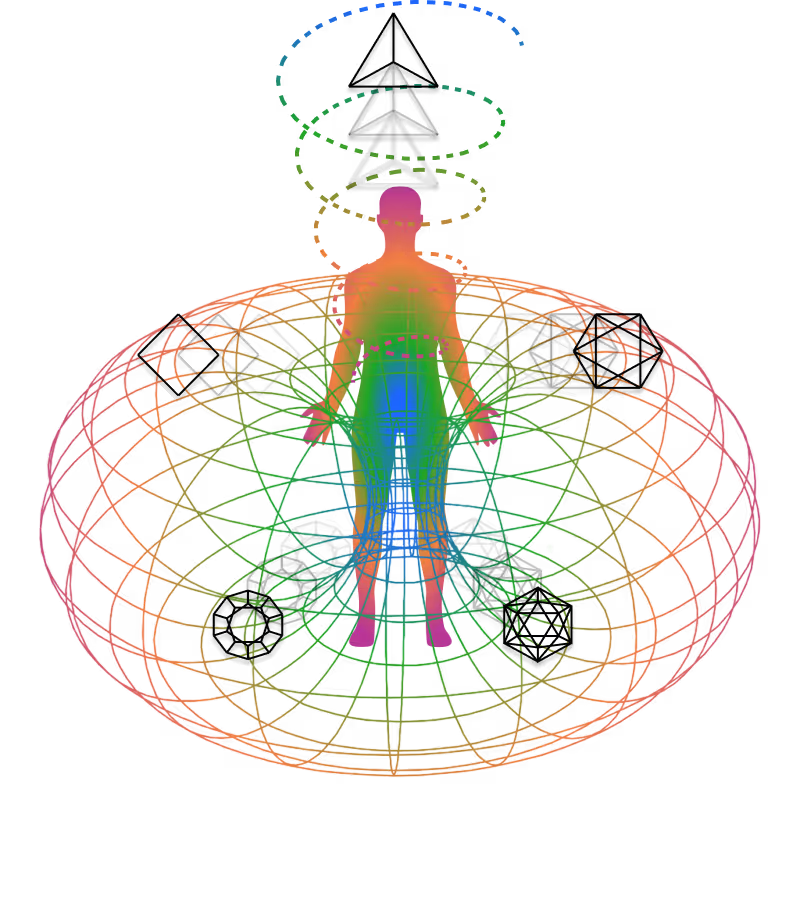The Dharma Routing Principle
Lesson Details
The Dharma Routing Protocol (DRP) functions as the Network Layer of the Rishi Operating System (Cosmic OS v1.0), overseeing the flow and coherence of distinctions (actions, thoughts, events) across the cosmic network of conscious agents. Dharma, in this context, is the optimal, geometrically sound pathfinding mechanism for existence, ensuring that individual and collective movements align with the Grand Synthesis: "Reality is consciousness organizing its distinctions according to the principles of positive geometry".

🎙️ Related Podclass
Lesson Content
I. Dharma Routing Principle (DRP)
The DRP is founded on the principle that the most “Dharmic” path is the one that guarantees maximal geometric coherence and minimal system noise (rigidity or fragmentation).
Protocol Definition: Dharma is the algorithm that computes the necessary actions (G) required for a Conscious Agent (CA) to progress from its current state ($C_{current}$) to its highest evolutionary potential ($C_{moksha}$), subject to the constraints imposed by its current Karmic burden ($Prarabdha$).
A. Computing the Most Dharmic Path (Optimal Navigation Algorithm)
The DRP operates as an Optimal Navigation Algorithm, prioritizing coherence across the agent’s personal terrain.
- Input Vector Acquisition: The DRP requires real-time data from three core registers:
- Guna Registers: Identifies the current processing bias (Sattva, Rajas, Tamas) to determine efficiency and noise levels.
- Karma Audit Log: Identifies the agent’s high-priority, non-preemptable debt (Prarabdha Karma) that structurally limits the agent's decision-space and path options.
- Akashic Profile: Provides the agent's core Vasanas (subtle tendencies), which define the agent's default conditioning and reading patterns.
- Path Computation (Coherence Metric): The algorithm computes possible next-state distinction sets by simulating consequences using the Karma Security Framework's Karma_Check endpoint. The "most Dharmic path" is the sequence of actions that:
- Maximizes the shift toward the Sattvic processing mode (clarity, balance).
- Reduces geometric rigidity and fragmentation within the agent's profile.
- Results in the fastest possible resolution of Prarabdha debt, thus freeing up computational capacity for evolutionary growth.
II. Algorithms for Tri-Metric Load Balancing
The DRP utilizes a Tri-Metric Load Balancer to ensure the computed optimal path is holistically sound, preventing single-factor optimization at the expense of system stability. These metrics correspond to the traditional concepts of Personal, Professional, and Spiritual Mastery.
Balancing Metric: Individual Coherence
Function/Goal: Personal Mastery (Health/Mental Stability)
Optimization Algorithm: Sattva Maximization: Uses the Guna Process Manager to refine buddhi (wise choices) and chitta (emotional purification), ensuring efficient Prana allocation.
Required Output State: High Clarity, Optimal Prana flow.
Balancing Metric: Collective Service
Function/Goal: Interpersonal and Societal Harmony
Optimization Algorithm: Ahamkara Tempering: Requires transcending identification with roles/status (Ahamkara) through practices like humility and service. The path must avoid causing dissension or criticism.
Required Output State: Minimized Interpersonal Debt (Runanubandha).
Balancing Metric: Evolutionary Growth
Function/Goal: Spiritual Mastery (Long-term Transcendence)
Optimization Algorithm: Witness-Self Cultivation: Focuses on cultivating Atman (detached awareness) and Paramatman (alignment with cosmic intelligence). This provides the long-term vector towards Moksha/Liberation.
Required Output State: Increased capacity for Nirodha Samskaras (tendencies toward Stillness).
III. Real-Time Adjustment and Course Correction
The DRP incorporates a real-time monitoring and adjustment system that handles deviations from the computed optimal route, effectively treating "disease as geometric patterns" that require immediate course correction.
A. Deviation Detection and Trigger
- Geometric Pattern Monitoring: The system continuously monitors the agent's internal geometric patterns. A deviation is detected when these patterns transition toward rigidity, fragmentation, or noise.
- Processing Error Identification: This is cross-referenced with the Guna Process Manager's output, which identifies the specific nature of the deviation:
- Rajasic Deviation: Detected as rajasic over-processing (scattered, stressed, restless). The agent is moving too fast or attempting high-throughput processes without sufficient focus.
- Tamasic Deviation: Detected as tamasic under-processing (lazy, depressed, confused). The agent is stalling or resisting the necessary movement/change.
B. Course Correction Protocol (The Health Navigation System)
Once a deviation is detected, the system initiates a structured course correction, which is analogous to a treatment regimen.
- Course Correction Assessment (Terrain Mapping): Utilizing the principles of -Omics Medicine, the agent's internal terrain (subtle body, physiology, cognitive profile) is mapped to precisely identify the location and nature of the geometric pattern causing the noise.
- Actionable Feedback Loop: Based on the diagnosis, the DRP issues correction commands:
- If Rajasic Deviation: The system introduces restraint and initiates the Guna Inquiry Protocol to integrate the activity and release latent Sattva (clarity). This may involve commands like focused meditation or reduced workload (Chitta-Prana optimization).
- If Tamasic Deviation: The system introduces controlled Rajas (activity) to overcome inertia and promote forward momentum. This may involve commands for physical activity or stimulating disciplines.
Path Reprogramming: The most powerful correction mechanism involves the application of Sanskaras (Mantras). These function as cognitive reprogramming tools designed to modify the underlying vasanas (tendencies) that caused the initial deviation, effectively revising the agent's default routing preferences in the Akashic File System.
🤌 Key Terms
🤌 Reflection Questions
Reflect on key questions from this lesson in our Exploration Journal.

Lesson Materials





